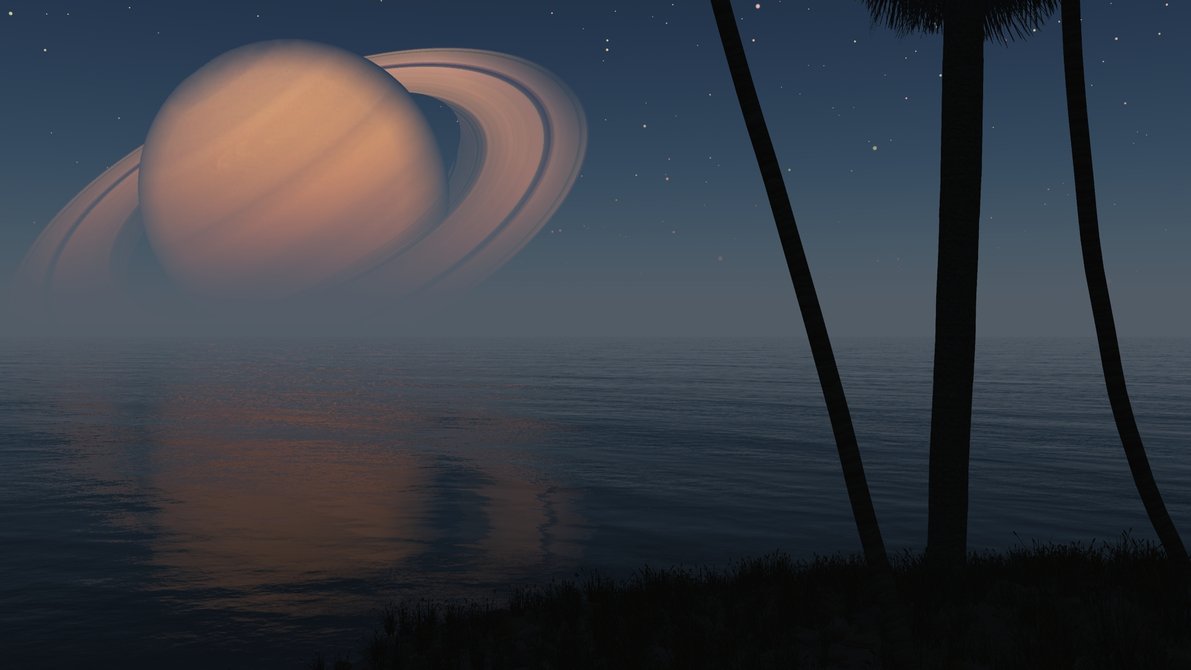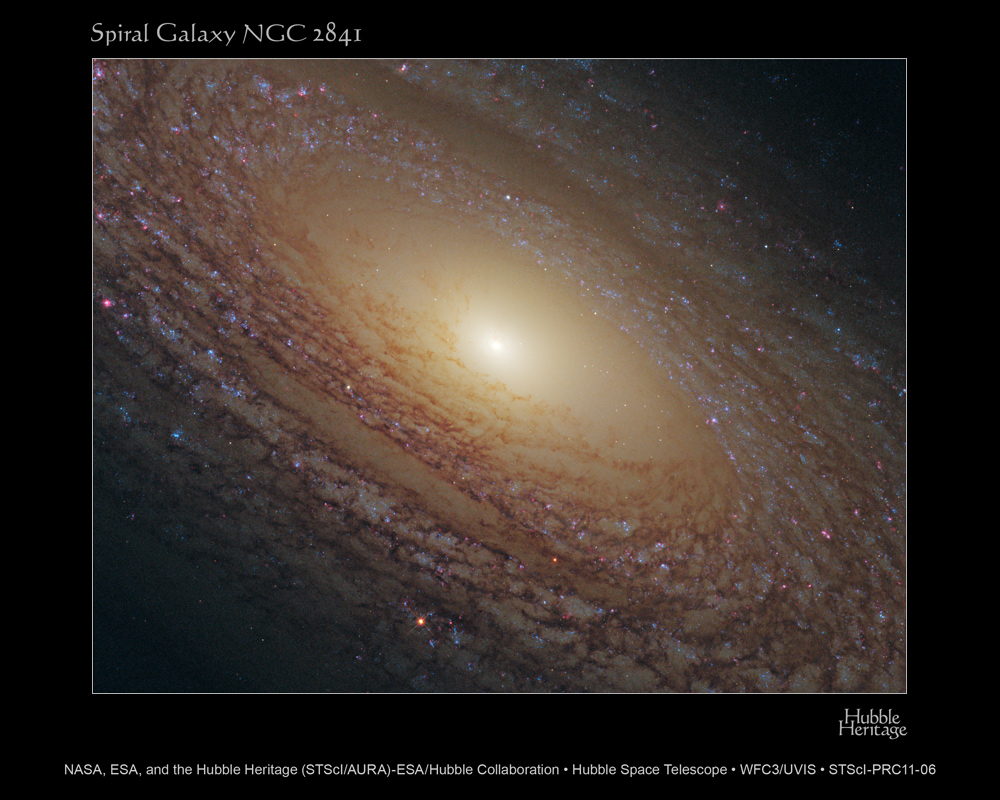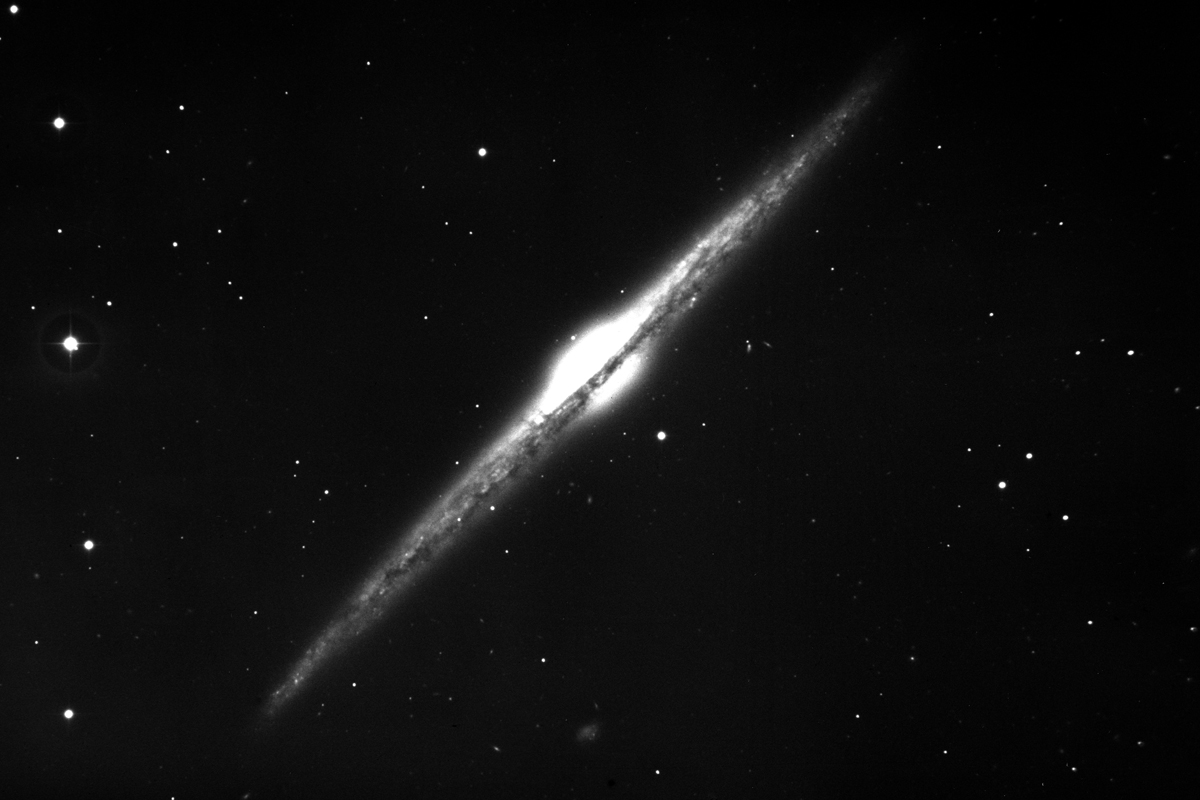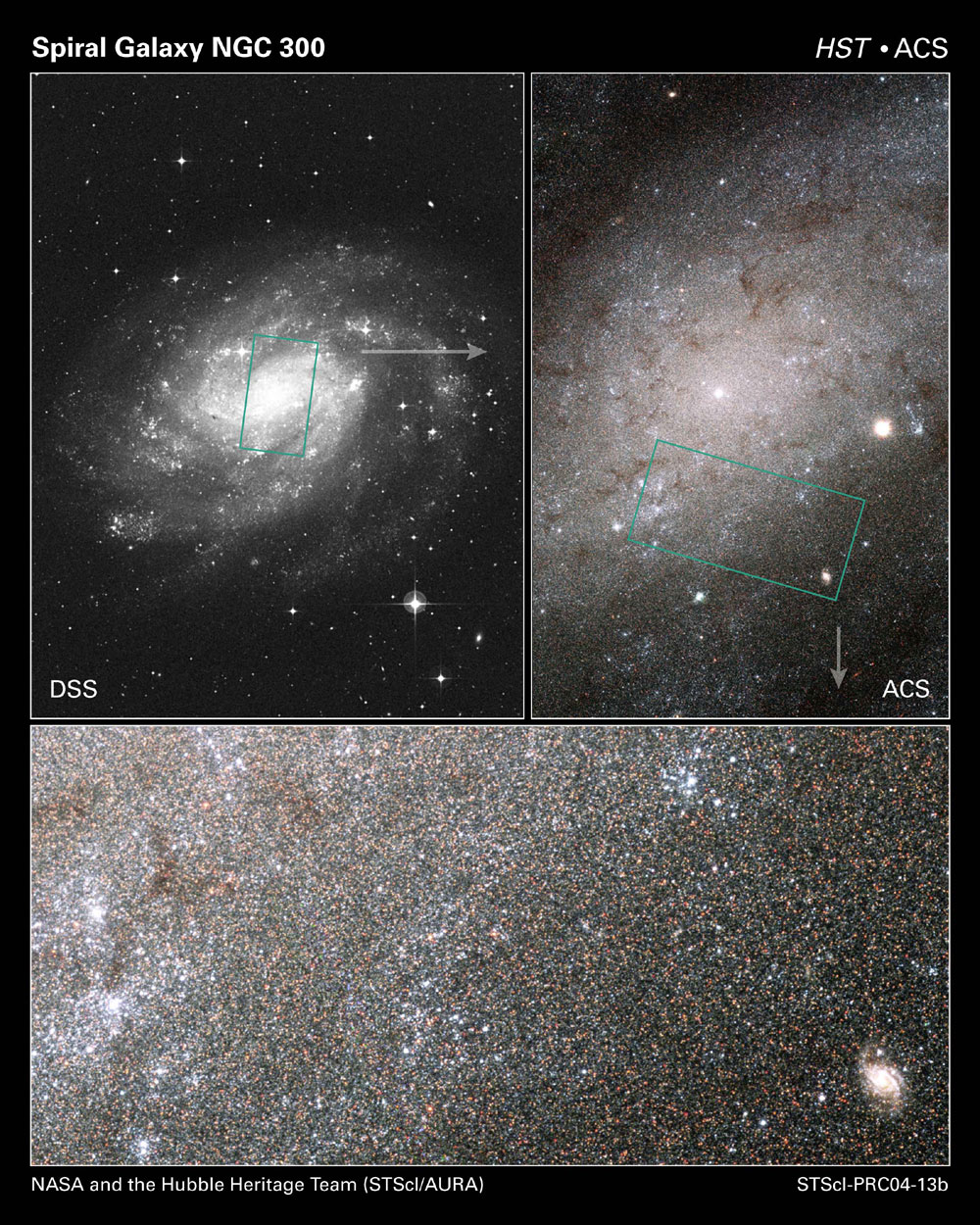It looks like you're using an Ad Blocker.
Please white-list or disable AboveTopSecret.com in your ad-blocking tool.
Thank you.
Some features of ATS will be disabled while you continue to use an ad-blocker.
share:
Originally posted by Socrato
This picture makes me wonder why so many of the "new" space photos appear to be computer graphics.
This photo makes me wonder why we still only have really rubbish shots of the moons surface.
I've always wished that the Earth had been a actual satellite of Saturn, with Saturn in the Earth's orbit about the sun. The sky would be so awesome
to look at then:


reply to post by eriktheawful
Me too mate.
But i think we would just be used to it - thus making it less of an attraction.
Sure, we'd still think of it as amazing, but it would be part of our lives - like the sun being a giant bright part of the sky.
Sort of makes you wonder when you hear news stories such as "austrian girl steps out of basement for first time in years... kids see moon for first time". How would that be? Surreal? Only if you've never been accustomed to it...
If saturn were to suddenly just pop up tomorrow as we wake up, a lot of people would panic, and our minds would explode (figuratively speaking). It would be traumatic.
Me too mate.
But i think we would just be used to it - thus making it less of an attraction.
Sure, we'd still think of it as amazing, but it would be part of our lives - like the sun being a giant bright part of the sky.
Sort of makes you wonder when you hear news stories such as "austrian girl steps out of basement for first time in years... kids see moon for first time". How would that be? Surreal? Only if you've never been accustomed to it...
If saturn were to suddenly just pop up tomorrow as we wake up, a lot of people would panic, and our minds would explode (figuratively speaking). It would be traumatic.
Originally posted by DJW001
Because they are taken by charge coupled devices through a series of filters.
So is the Cassini photo above. You tried to explain the difference with a statement that equally applies to both.
It's the same technology in compact digital cameras. Some people just love to sound smart.
Originally posted by mark1167
I always laugh when I see such detailed Hi res pictures of planets and moons in our sloar system.
Because we still can't get Nasa to give us a high resolution close up shot of the lunar surface and the landing site of Apollo. All we get is a pic of a real tiny tiny thing in the distance of what they say is the lunar module.
I have to Agree with you mark1167
This Actual REAL Photo NO CGI No Artist Vision !
Stare at for a While!!!
then think how far its Away from Earth ! ((( 47 Million Light Years Away ))
News Release Number: STScI-2011-06
Hubble Shows New Image of Spiral Galaxy NGC 2841
hubblesite.org...
Images of it in differt sizes biggest 1.65 mb
hubblesite.org...

NASA's Hubble Space Telescope reveals a majestic disk of stars and dust lanes in this view of the spiral galaxy NGC 2841, which lies 46 million light-years away in the constellation of Ursa Major (The Great Bear). T
Now think of how Hubble can Show this Much Clarity ...
Now think about those Planets around Stars that's around say ...
5 to 25 light years Away and all we see is Blur's Shot's
On one Conclusion is Dust Clouds and Particle's getting in the Way !! in the field of View
but when you see this that is 47 million LY Away and you think to yourself
Now if the operator's of the Hubble Scope can just pan back ! and see
the Close up of Star's & the Planets from those Stars .. in our Own dam Galaxy
Then you think about a Few planets in the Goldilocks zone and
Scientist say their are 100% sure there may be life on that planet!
it makes you wonder ..
anyways
nice shot Of IO Clarity getting better with age now we need HD IMAX resolution !
Improvement the that dusty grain blur we got in the 70s when Computers Cameras Improve !!
But we will NEVER Get it!! from NASA or the Observatories ! on this Planet
speaking of Observatory
this Shot is from the early to mid 50s
see these Stars the Big Ones !! those are from Our Galaxy !!

It makes you think what The Government can see or Allow for the Public to see
here is little bit !! in another Galaxy 6.5 million light years Away

This montage of images demonstrates the resolving power of the Hubble Space Telescope. Although the galaxy is at a distance of 6.5 million light years from Earth, the HST’s Advanced Camera for Surveys reveals individual stars in the outer parts of the galaxy.
en.wikipedia.org...:Astronomy/Picture/June_2005
edit on 9-4-2012 by Wolfenz because: (no reason given)
edit on 9-4-2012 by Wolfenz because: (no reason given)
and we get this Blur from Hubble !
Hubble Captures Volcanic Eruption Plume From Io
hubblesite.org...
well a little better ...
Rare Hubble Portrait of Io and Jupiter
hubblesite.org...
Hubble Clicks Images of Io Sweeping across Jupiter
hubblesite.org...
Hubble Discovers Bright New Spot on Io
hubblesite.org...
Hubble Space Telescope Resolves Volcanoes on Io
imgsrc.hubblesite.org...
Note: I guess The Hubble Scope too Strong to show clarity this close
but what about a nearest star system with a planet ! ?? what would the clarity be like
well that's if no dust particles would be in the way ...
were the actual photo instead of an Artist's Concept!!
Hubble Probes Layer-cake Structure of Alien World's Atmosphere
hubblesite.org...
sorry ats there is something wrong here ..
can NASA just make Space Scope just to see within own Galaxy
yet Cassini cameras can show texture of IO in a Flyby
Hubble Captures Volcanic Eruption Plume From Io
hubblesite.org...
well a little better ...
Rare Hubble Portrait of Io and Jupiter
hubblesite.org...
Hubble Clicks Images of Io Sweeping across Jupiter
hubblesite.org...
Hubble Discovers Bright New Spot on Io
hubblesite.org...
Hubble Space Telescope Resolves Volcanoes on Io
imgsrc.hubblesite.org...
Note: I guess The Hubble Scope too Strong to show clarity this close
but what about a nearest star system with a planet ! ?? what would the clarity be like
well that's if no dust particles would be in the way ...
were the actual photo instead of an Artist's Concept!!
Hubble Probes Layer-cake Structure of Alien World's Atmosphere
hubblesite.org...
sorry ats there is something wrong here ..
can NASA just make Space Scope just to see within own Galaxy
yet Cassini cameras can show texture of IO in a Flyby
Originally posted by jra
Originally posted by elevenaugust
This Cassini photo gives an idea on how big Jupiter is: Io is slightly bigger than our Moon: 420 000 km for Io and 384 399 km semi-major axis for the moon.
Some corrections need to be made here. Firstly, it was Galileo that went to Jupiter. Cassini is at Saturn. Unless this is an image from Cassini when it did a flyby past Jupiter on its way to Saturn.
As for the numbers you gave, they have nothing to do with the size of the Moons. Those are for there orbital characteristics. However you are right in that Io is slightly bigger than our Moon. Io's mean radius: 1,821.3 km. Our Moon's mean radius: 1,737.10 km.
Thanks for the correction! 420 000km is three times bigger than Jupiter itself!! (mean radius: 70 000kms)... I'm sometimes forgetful...
And, yes, it was a Cassini image taken during its flyby past Jupiter!
Originally posted by tombangelta
Originally posted by Socrato
This picture makes me wonder why so many of the "new" space photos appear to be computer graphics.
This photo makes me wonder why we still only have really rubbish shots of the moons surface.
If you bothered to read this post in this very short thread your comparison is ludicrous. Tell us what detail you can see on Io. Would you be able to see a car?
reply to post by SteveR
Not exactly, space photography is done with single light wavelengths, and have to be reassembled after transmission of the 3 light wavelengths that match what RGB we see the closest. Your camera shoots in RGB with a single exposure. Up to 8 and more different light wavelengths are used for scientific purposes, imagery for the public is not the primary missions of the cameras in space.
What the guy making a big stick of misunderstanding on Hubble imagery is that is has a particular arc second resolution determined by the size of its reflecting mirror and focal length. Fact is many of the star systems and nebulas in those vast Hubble arrays are more arc seconds bigger than the moon, just dimmer and that along with our atmosphere is why you don't see them yourself. Also what is imaged is out of your visual spectrum.
A little browsing on the Hubble telescope site or any telescope forum could provide a bit education before you spout off like an idiot.
Not exactly, space photography is done with single light wavelengths, and have to be reassembled after transmission of the 3 light wavelengths that match what RGB we see the closest. Your camera shoots in RGB with a single exposure. Up to 8 and more different light wavelengths are used for scientific purposes, imagery for the public is not the primary missions of the cameras in space.
What the guy making a big stick of misunderstanding on Hubble imagery is that is has a particular arc second resolution determined by the size of its reflecting mirror and focal length. Fact is many of the star systems and nebulas in those vast Hubble arrays are more arc seconds bigger than the moon, just dimmer and that along with our atmosphere is why you don't see them yourself. Also what is imaged is out of your visual spectrum.
A little browsing on the Hubble telescope site or any telescope forum could provide a bit education before you spout off like an idiot.
Originally posted by Socrato
This picture makes me wonder why so many of the "new" space photos appear to be computer graphics.
They are, but in much the same way your digital camera creates "computer graphics".
Awesome pic! and lets not forget that planets have been found outside our own solar system that are many times bigger then Jupiter...
not really,people would just take it for granted and get bored.man we had feeds from the mars rovers and all people gave a # about was whatever celebrity was releasing a new sex tape,errr ummmm i mean,had a sex tape "leaked".
Originally posted by eriktheawful
I've always wished that the Earth had been a actual satellite of Saturn, with Saturn in the Earth's orbit about the sun. The sky would be so awesome to look at then:
Originally posted by baburak
great picture
p.s.: funny how the Moon is always black and white
Why is that? I mean it isn't black & white right? I was just wondering that myself.
reply to post by HawkeyeNation
Go outside tonight and take a good look at it with a pair of binoculars. What color is it?
Why is that? I mean it isn't black & white right? I was just wondering that myself.
Go outside tonight and take a good look at it with a pair of binoculars. What color is it?
Also in order to 'map a 3d model of a planet' you need the whole or at least over half of it photographed and projected to a rectangle so you can
skin a sphere in your 3d program. How is that not a relatively real representation of a planet? Add in altimeter data and a bump to your skin and you
can create shadows from a light source of your choice, infinite angles. Sometimes a high resolution data source can give you representations
infinitely more diverse than thousands of individual images, just usually not near the resolution but talking whole planets, you wont get high
resolution due to limits of software rendering image size limits.
Perfect for sci fi artwork if you can't paint well. Program some software and wait days for it to work for you instead.
Perfect for sci fi artwork if you can't paint well. Program some software and wait days for it to work for you instead.
Originally posted by DJW001
reply to post by HawkeyeNation
Why is that? I mean it isn't black & white right? I was just wondering that myself.
Go outside tonight and take a good look at it with a pair of binoculars. What color is it?
Ahem...this thread was just made on ATS and this is what I was referring to.
www.abovetopsecret.com...
reply to post by HawkeyeNation
Are you a digital camera? Color is a complicated phenomenon. It is not an inherent property of something, but a production of the human mind. Different materials reflect photons of different energy states in varying degrees. The human eye has special receptor cells that can detect some, but not all, of these energy states or "wavelengths." There must be enough of these photons striking the receptor cells, called "cones" because of their shape, to be detected. The brain interprets the sensation of light striking these cells as "color." The brain "paints" a scene by assigning subjective "colors" to certain wavelengths, interpolating between the three wavelengths the eye is most sensitive to. The bottom line is that if you look at something with your eyes, you may see an undifferentiated grey, because the object does not reflect enough photons of the wavelengths we are most sensitive to for our receptor cells to detect. If you take a longer exposure using a camera and filters, you can gather enough photons to distinguish the object's reflectivity at different wavelengths. This is what happens when you supersaturate an image.
So why are photos taken of the Moon by spacecraft of the Moon in black and white? Not all of them are. The early Lunakhod and Orbiter photos were because digital photography was very primitive and the bandwidth limited. Some of the photos taken by the Apollo missions were in black and white because that film had a faster ISO. In the color photographs, the Moon's surface usually looked grey because they were not intentionally supersaturating the exposures. In other photographs, it sometimes has a reddish cast because that wavelength was more reflective when seen from certain angles.Some probes, like Clementine, take images through specific filters to detect particular minerals. These images are sometimes combined into spectacular "false color" images:

www.lpi.usra.edu...
No matter how long and hard you stare at Aristarchus with your own human eyes, you will never, ever, see it look this colorful.
Ahem...this thread was just made on ATS and this is what I was referring to.
www.abovetopsecret.com...
Are you a digital camera? Color is a complicated phenomenon. It is not an inherent property of something, but a production of the human mind. Different materials reflect photons of different energy states in varying degrees. The human eye has special receptor cells that can detect some, but not all, of these energy states or "wavelengths." There must be enough of these photons striking the receptor cells, called "cones" because of their shape, to be detected. The brain interprets the sensation of light striking these cells as "color." The brain "paints" a scene by assigning subjective "colors" to certain wavelengths, interpolating between the three wavelengths the eye is most sensitive to. The bottom line is that if you look at something with your eyes, you may see an undifferentiated grey, because the object does not reflect enough photons of the wavelengths we are most sensitive to for our receptor cells to detect. If you take a longer exposure using a camera and filters, you can gather enough photons to distinguish the object's reflectivity at different wavelengths. This is what happens when you supersaturate an image.
So why are photos taken of the Moon by spacecraft of the Moon in black and white? Not all of them are. The early Lunakhod and Orbiter photos were because digital photography was very primitive and the bandwidth limited. Some of the photos taken by the Apollo missions were in black and white because that film had a faster ISO. In the color photographs, the Moon's surface usually looked grey because they were not intentionally supersaturating the exposures. In other photographs, it sometimes has a reddish cast because that wavelength was more reflective when seen from certain angles.Some probes, like Clementine, take images through specific filters to detect particular minerals. These images are sometimes combined into spectacular "false color" images:

www.lpi.usra.edu...
No matter how long and hard you stare at Aristarchus with your own human eyes, you will never, ever, see it look this colorful.
I still don't get why the detail of the moons image is always poor quality when that image was taken over 10,000 km on a flyby pass near Jupiter and
we have had satellites only a short distance away from the moon have less detail? I have seen images taken from satellites above earth and show
fantastic close ups of people on the ground with unbelievable detail so why can they not be consistent?
reply to post by myss427
All of the spectacular detail in the image in the OP is on Jupiter, which is immense. Io, which is roughly the size of our Moon, appears as a mottled disk. The satellites surveying our Moon have a resolution of about one or two meters to the pixel; this is comparable to the resolution of commercial Earth satellites. It is easier to make sense of images of Earth taken from space because we have points of reference to compare them to. We know what a sports stadium looks like, a parking lot, a house, a freeway with cars. Our mind can fill in the details. The very detailed images on Google Earth were taken from airplanes. The military would like you to believe that they have spy satellites that can resolve objects as small as 1/3 meter or less. If they do, NASA doesn't have access to them.
I still don't get why the detail of the moons image is always poor quality when that image was taken over 10,000 km on a flyby pass near Jupiter and we have had satellites only a short distance away from the moon have less detail? I have seen images taken from satellites above earth and show fantastic close ups of people on the ground with unbelievable detail so why can they not be consistent?
All of the spectacular detail in the image in the OP is on Jupiter, which is immense. Io, which is roughly the size of our Moon, appears as a mottled disk. The satellites surveying our Moon have a resolution of about one or two meters to the pixel; this is comparable to the resolution of commercial Earth satellites. It is easier to make sense of images of Earth taken from space because we have points of reference to compare them to. We know what a sports stadium looks like, a parking lot, a house, a freeway with cars. Our mind can fill in the details. The very detailed images on Google Earth were taken from airplanes. The military would like you to believe that they have spy satellites that can resolve objects as small as 1/3 meter or less. If they do, NASA doesn't have access to them.
new topics
-
Ed Dowd some good news
Medical Issues & Conspiracies: 3 hours ago -
Anyone like the Scorpions?
Music: 3 hours ago -
What if this is true?
2024 Elections: 4 hours ago -
Merry-Go-Round Ride
Short Stories: 6 hours ago -
It's toast
General Chit Chat: 10 hours ago -
Man Stabbed or Cardiac arrest on Westminster Bridge, London, UK
Mainstream News: 11 hours ago
top topics
-
A fix for the Trans players in sports
Social Issues and Civil Unrest: 13 hours ago, 15 flags -
Petition Calling for General Election at 564,016 and rising Fast
Political Issues: 16 hours ago, 14 flags -
What if this is true?
2024 Elections: 4 hours ago, 10 flags -
Man Stabbed or Cardiac arrest on Westminster Bridge, London, UK
Mainstream News: 11 hours ago, 7 flags -
It's toast
General Chit Chat: 10 hours ago, 7 flags -
Merry-Go-Round Ride
Short Stories: 6 hours ago, 5 flags -
Ed Dowd some good news
Medical Issues & Conspiracies: 3 hours ago, 4 flags -
Anyone like the Scorpions?
Music: 3 hours ago, 3 flags
active topics
-
International Criminal Court Issues Arrest Warrant For Netanyahu
Mainstream News • 48 • : JJproductions -
Ok this is some BS now WTH
Rant • 17 • : tamusan -
What if this is true?
2024 Elections • 21 • : AlexandrosOMegas -
A fix for the Trans players in sports
Social Issues and Civil Unrest • 19 • : Macenroe1982 -
France gives Ukraine license to fire long-range missiles at Russia
World War Three • 40 • : cherokeetroy -
Ed Dowd some good news
Medical Issues & Conspiracies • 2 • : annonentity -
Results of the use of the Oreshnik missile system in Dnepropetrovsk
World War Three • 218 • : Imhere -
Anyone like the Scorpions?
Music • 2 • : Flyingclaydisk -
Merry-Go-Round Ride
Short Stories • 5 • : randomuser2034 -
Russia Ukraine Update Thread - part 3
World War Three • 6876 • : worldstarcountry
